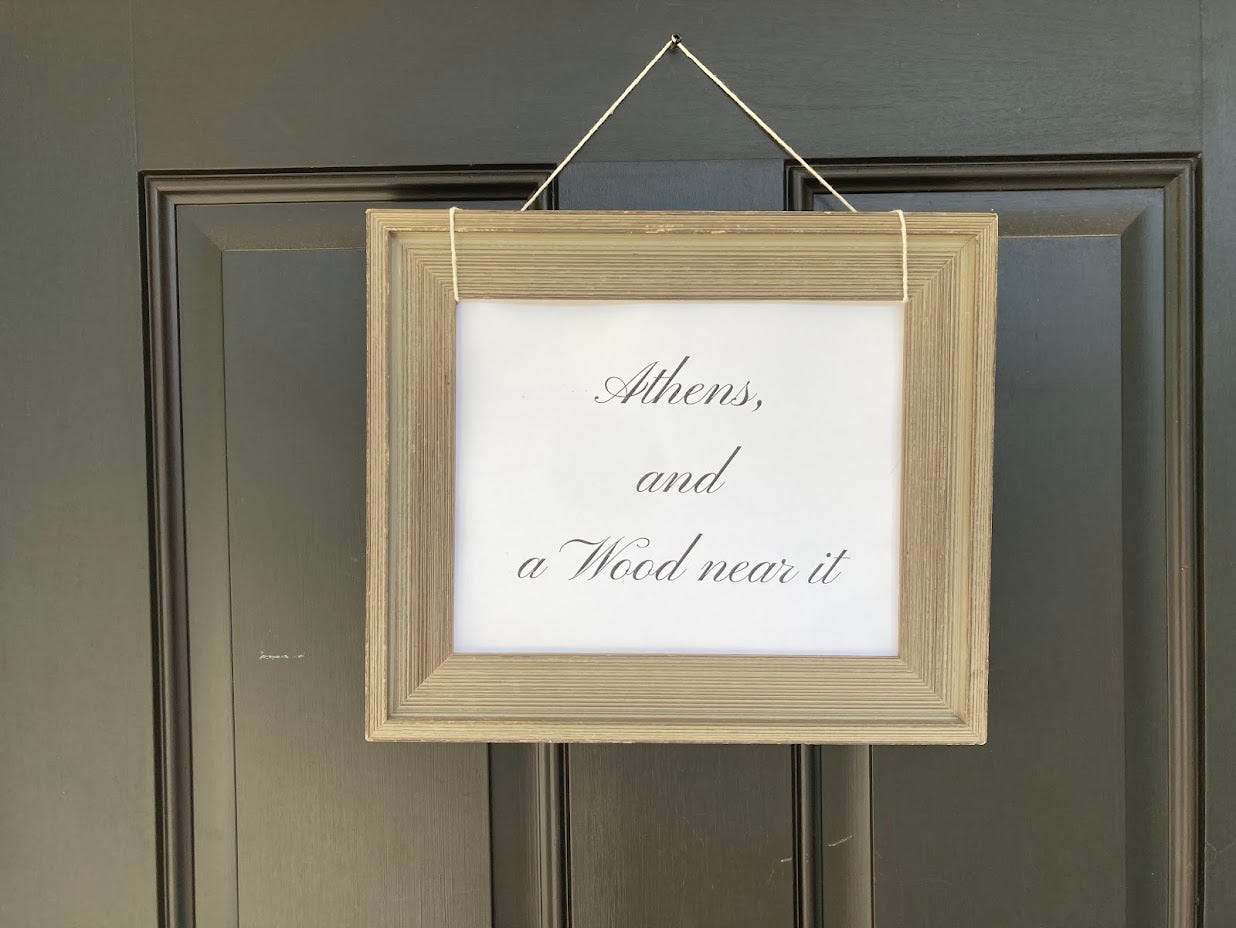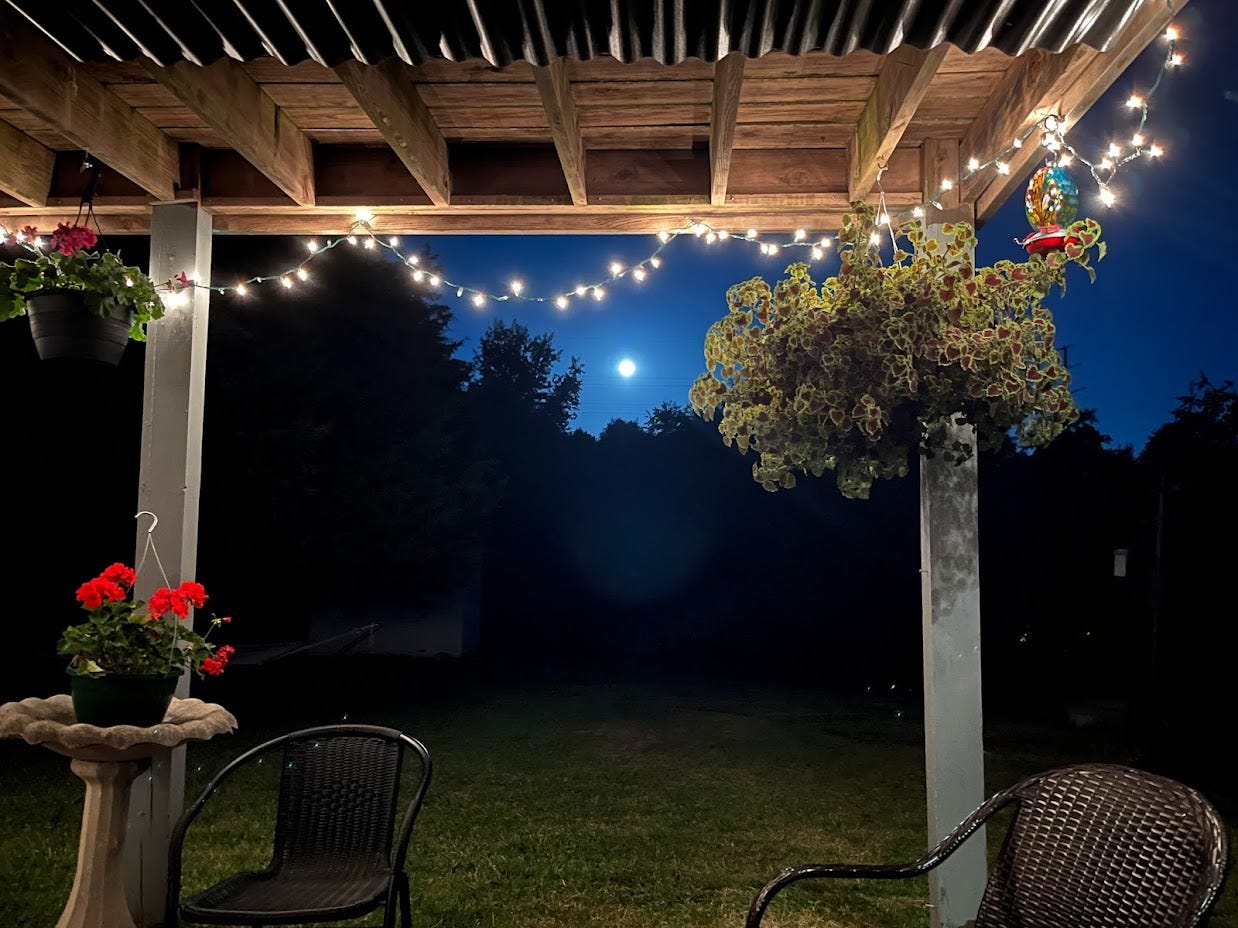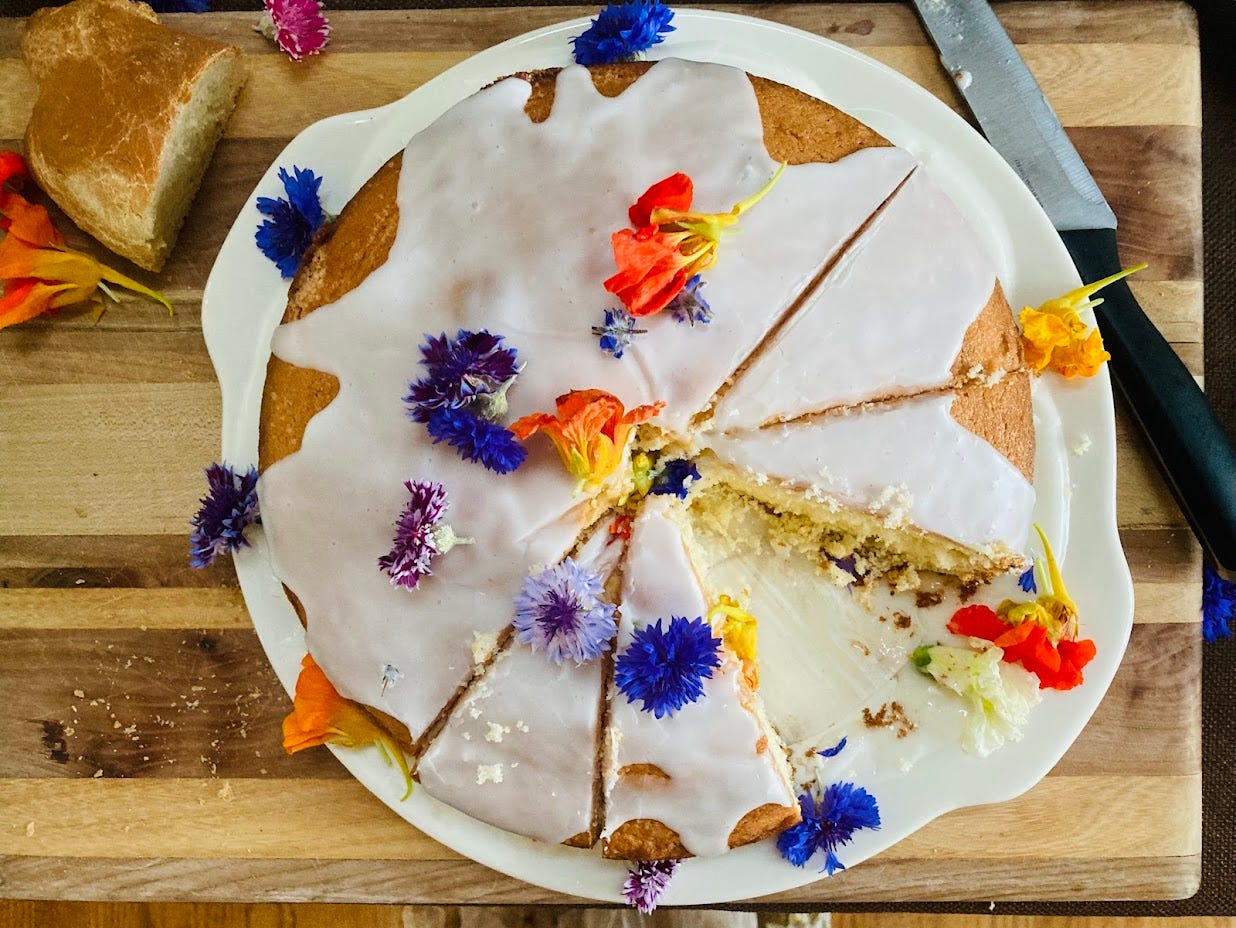A Midsummer Night's Speech
In the middle of my life, I have learned to translate myself better.
For the next two-and-a-half weeks, I’ll be focused on a project called Bridge of Lament, which serves our local Lynchburg, Virginia, community. You’re welcome to join us, even if you don’t live here! Look for daily posts between Juneteenth and July Fourth on our city and country’s racial history. This year’s theme is Education.
Meanwhile, the post below is from this time one year ago. We didn’t get to throw a Midsummer’s Party this year, but last year’s was good enough to last. This is the speech I gave. Afterward, our gathered friends humored me by diving into a reading of A Midsummer Night’s Dream under the stars.
“Bless thee, Bottom, bless thee! Thou art
translated!”
III.1.120
When I was in high school, I bought a slim copy of Shakespeare’s A Midsummer Night’s Dream at our local used bookstore. It was the cover that drew me–a water-colored woodland, lots of flowers, fairies. That, and the movie Dead Poets Society, which I'd seen in the theater several years before. Robert Sean Leonard’s tragic heartthrob portrayal of Puck certainly had something to do with my carrying the book to the cash register.
The story, the language, the setting, the play on words, the stand-out lines (“Though she be but little, she is fierce!” and “Lord, what fools these mortals be!” and “The course of true love never did run smooth.”): I loved it all. The happy ending. The flowers. The fairies. Sixteen years old, I sat on the blue sofa in my mother’s dim, mauve living room and disappeared into “Athens, and a wood near it.”
I read the other usual Shakespeare plays in high school–Romeo & Juliet, MacBeth, Othello. Got A’s on my papers contrasting characters and considering themes of dark and light. In college, whole Shakespeare classes and the reason I own a complete anthology of his works that’s thicker than my multi-volume Oxford American Dictionary. . . . But I never studied A Midsummer Night’s Dream in any class.
Maybe the play is too simple, or too well-known. The themes–love triangles (or quadrangles, as it were) and fairies playing merry mischief. What is there to analyze? Maybe this play was meant fully for the gathering up and release of joy in company, for sheer enjoyment. And I kept enjoying it. I reread it periodically in the intervening years. I owned the strange 1999 film on DVD. I saw it performed live a number of times. I quoted it on my wedding invitations.
And on one particularly magical night in Oxford, England, 2002, I walked with friends across a twilit field and sat in risers among the trees while Hermia and Lysander, Oberon and Puck, and silly Bottom and all the rest of the players acted out their scenes on the banks of a river. I suddenly understood: A Midsummer Night’s Dream wasn’t wasn’t written for London’s Globe Theater, but for this: an intimate setting under the trees, under the stars.
For nearly two decades, I have dreamed of another such performance, one in my very backyard. A Midsummer Night’s Party. Many summers, I’ve wondered, “Is this the year?” But I could never make myself plan it. Chalk that up to dicey executive function. Chalk that up to something else, too: a fear of being…silly. Chalk that up to fear of rejection, too many years trying to front as “nothing out of the ordinary.” What if I threw the party, and no one came? What if I delivered invitations to this deep dive into one of my special interests, and people thought I was downright weird? What if no one cared about literature or beauty like I did?
I needn’t have worried.
At the beginning of his Divine Comedy, Dante says that “In the middle of the journey of my life I came to myself within a dark wood.” In the middle of A Midsummer Night’s Dream, nearly all the characters arrive in a wood, and madness ensues. In the middle of my own life, I have learned to translate myself better. I care less what people think than I used to, and I am less apologetic about the things I like. In the middle of my life, I have arrived among friends who respond thusly when I ask them to join me for a Midsummer Night’s Party: “That sounds like a lot of fun! We’ll be there!” and “With bells on!” and “Can I be Hermia?” and even, “It would be a dream to play Bottom!”
Last night, I threw the party. Which is to say that eight souls feasted and imbibed and then gathered on a back patio under fairy lights to read and laugh and find a fresh commonality among literature and life together.
The scene I chose for us to read might not be the one you expect. The scene in the very middle of the play–Act III, Scene I–launches with four rather silly men stumbling into the woods to practice a play (Yes! A play within a play), which they hope will be chosen to perform at the duke Theseus’s upcoming wedding feast. Quince, Bottom, Flute, Starveling, and Snout are the play’s simplest, most straightforward comic relief.
For a gathering sixteen years in the making, why not begin with the more compelling love quadrangle between Lysander, Hermia, Helena, and Demetrius? Why not dive straight into the high poetry of Titania and Oberon’s dramatic angst with each other? Because something important happens in the middle.
Something important happens among the regular players, the people on the ground, as it were. Whether they understand the significance or not, in working out how to best craft their performance (How to create a wall onstage? How to act out the moon?), Quince and Bottom are–hilariously, yes, but also touchingly–working out how to translate life.
Aren’t we all?
“Joy, gentle friends! Joy and fresh days of love
Accompany your hearts!”
V.1.30







THIS IS SO COOL
Absolutely beautiful!